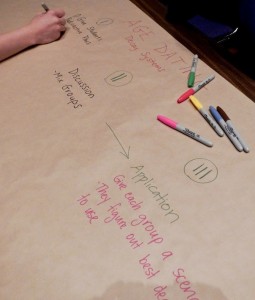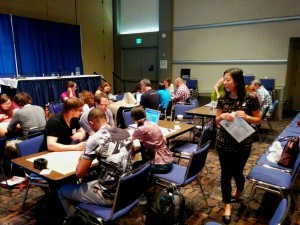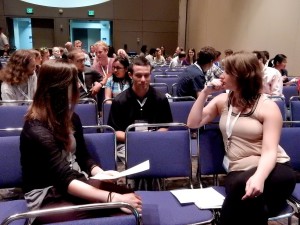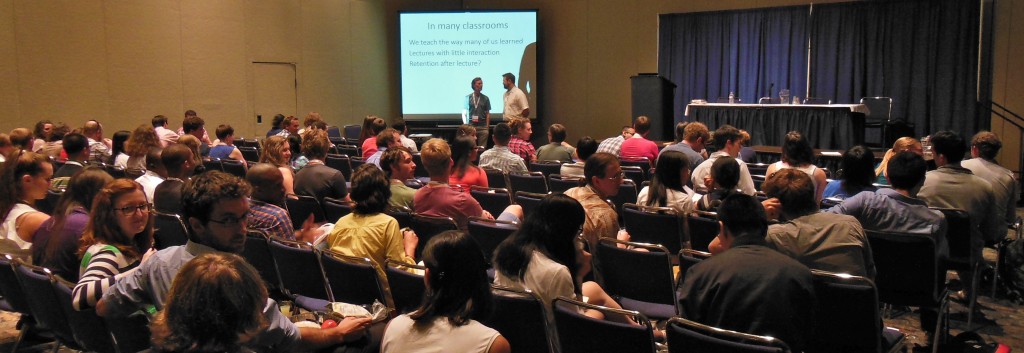MAGNET was the proud sponsor and organizer of two professional development workshops held in association with the Goldschmidt geochemistry conference in Sacramento, California this summer (June 8-13, 2014). The workshops were centered on evidence-based instructional methods developed through the Carl Wieman Science Education Initiative, a multi-year project at the University of British Columbia aimed at dramatically improving science education.
The first workshop, “Teaching and Learning Activities in Geochemistry: Examples and Applications” held Sunday morning, in particular capitalized on the principle that students learn best when they actively manipulate course content and connect it to their own knowledge. Well-structured and relevant learning activities create strong connections between concepts addressed in class and in lab, allow students to practice vital skills, and result in a high level of engagement and discussion.
“I learned that the teacher need not always feel compelled to stand and lecture, that students can learn by themselves and have fun too.”
The 25 participants (roughly half faculty and half students, from 8 countries) experienced several geochemical activities from the student’s perspective. The workshop launched straight into an icebreaker activity on the periodic table, followed by a short worksheet activity on crustal abundance vs. price. Later we tackled longer and more complex problems including a jigsaw activity on analytical techniques, a poster puzzle on inosilicates and a framework activity on mineral evolution. Each exercise was followed by a discussion of how they were successful and how they could be modified for other courses or environments.
“Going through the activities myself helped me see how I would change things or what might be difficult for students.”
For the grand finale, participants were challenged to develop their own geochemistry activity. We were blown away by the originality and creativity of the ideas and topics, which ranged from thermodynamics and stable isotope fractionation (using candy!) to geochronology and crustal evolution. The winning group was rewarded with photographic card decks of the elements for their activity entitled “Foram Murder Mystery” based on a jigsaw format with 5 categories – geochronology, trace elements, mineralogy, organic chemistry, stable isotopes – each with their own data, to interpret the history of an extinction event.
The second workshop, “How Learning Works: Useful Techniques for Future Teachers” held Monday at lunchtime, was specifically designed for students and early career researchers. In this interactive workshop about 80 participants got a useful grounding in proven teaching techniques guided by research on how the brain works and how people learn. Specifically, participants learned about lecture retention, research-based instructional strategies, and the differences between expert and novices.
Later we got everyone out of their seats to participate in an example jigsaw activity, as well as break-out groups to discuss techniques on organizing effective lessons, assisted by our very own MAGNET trainees, using skills they acquired during the first annual MAGNET workshop. The groups considered diverse approaches to make education engaging and accessible and ways to help keep students motivated in the classroom and beyond.
“MORE…I could do this all day.”
Instructors & Assistants
- James Scoates, Professor, UBC
- Brett Gilley, Science Teaching and Learning Fellow, UBC
- Diane Hanano, MAGNET Program Coordinator
- MAGNET trainees: Carol Cheyne, Anaïs Fourny, Gregor Lucic, and Elliott Skierszkan












 Site by Sprout Creative
Site by Sprout Creative